What Animal Can I Keep In South Carolina
Southward Carolina is a smallish state, only with 3 geographic regions, mild winters, and hot and humid summers, it is a paradise for all kinds of wildlife, from small-scale rodents to badgers, mink, spiders, long-tailed weasels, birds, reptiles, amphibians, and insects. The state is dwelling house to animals strange and pedestrian, predators and herbivores, some of the land'due south rarest animals, and those seen and heard every twenty-four hour period. Hither are only a few of the fantastic beasts of Due south Carolina and where to find them:
The Official Animal of South Carolina
The official land animal of South Carolina is the white-tailed deer, which, to be blunt, is found absolutely everywhere in the state.
Official state bird
South Carolina's official land bird is the Carolina wren, an ambitious lilliputian bird with a loud and confident voice. The state wild game bird is the wild turkey, which, like the white-tailed deer, is widespread. Southward Carolina'southward state duck is the forest duck, which is likewise called the Carolina duck.
Official state marine mammal
The bottlenose dolphin is commonly seen off the declension of the country. The official migratory marine mammal is the northern correct whale, which comes to the coastal waters to give birth.
Where To Find The Top Wild fauna in S Carolina
A citizen of the country won't demand to travel far to experience South Carolina's wild animals. All style of birds, opossums, raccoons, skunks, wild hogs, and white-tailed deer are frequent visitors to farms and backyards. However, South Carolina does accept 47 state parks that embrace 9000 acres from the southern declension to the mountains. In these parks, the visitor can glimpse the less mutual animals such as the badger, the mink, alligators, and the long-tailed weasel.
Among the state and national parks is Table Rock State Park in Pickens County where people tin can fish for the country fish, the striped bass every bit well as catfish, trout, and bream at Pinnacle Lake and Lake Oolenoy. Other areas are Caesars Caput State Park, where visitors can discover blackness bears, effort to become a glimpse of the endangered green salamander, and fish for trout in the rivers.
Found but eighteen miles from Columbia, the state capital, Congaree National Park is abode to feral pigs, otters, bobcats, and armadillos. Its waters agree many species of fish, including catfish. Other sites are Kings Mountain State Park and Paris Mount Country Park, with their many varieties of birds and fish. Hunting Island Country Park is a barrier isle that's domicile to alligators, deer, diamondback rattlesnakes, and many types of fish, including barracuda. Information technology is where the rare loggerhead turtle hauls out to dig nests in the sand and lay eggs.
Marine Mammals
Besides the bottlenose dolphin and the right northern whale that visits seasonally, marine mammals found off South Carolina'due south coasts include the minke, sei, bowhead, fin, and humpback whales. Other marine mammals are the goose beaked whale, the sperm whale, the harbor seal, and the harbor porpoise, and other types of dolphins, beaked whales, and pilot whales. The Due west Indian manatee, a foreign and peaceable animal somewhere between a walrus and a dolphin, is also found off South Carolina.
Canines
Though the gray wolf seems to have been extirpated from the country, some claim that the red wolf can all the same be plant in South Carolina'due south forests. Some also merits that this canine is actually a cross between a wolf and a coyote. If it is still establish in South Carolina, information technology must be the rarest of canines, and its condition is critically endangered.
Canines that are not endangered are the grayness play a joke on and the red pull a fast one on, which are also visitors to people'due south yards. The coyote has besides made its mode into Due south Carolina as it has into other parts of North America.
Bats
Though people are wary of bats, they perform an important role in the ecosystem past eating mosquitoes and other insect pests such as cockroaches, Japanese beetles, leafhoppers, and cucumber beetles. Among the bats found in Due south Carolina are the large brownish bat, the footling brown bat, the evening bat, the eastern pipistrelle, and the hoary bat. Bats often roost in caves or in people'south attics or barns.
Rabbits
Rabbits institute in Southward Carolina are the eastern cottontail, one of the near commonly seen rabbits, the swamp rabbit, and the marsh rabbit.
Big Cats
The bobcat is South Carolina's only extant large cat. The cougar was extirpated from the country, and its subspecies, the eastern cougar is extinct.
Rodents
Southward Carolina also has a wealth of rodents, many of whom do find their fashion into buildings. They include the firm mouse, which is common to the point of ubiquity even though information technology is not native to the land. Other rodents are more than species of mice, including jumping mice, the black, Norway, hispid cotton and marsh rice rats, the musk rat, and voles. The land is besides home to several species of squirrels, including the groundhog, the eastern chipmunk, and the southern flying squirrel. Beavers build their dams and lodges in South Carolina'southward ponds, streams, and swamps.
Shrews
Though shrews aren't rodents, they are mouse-sized creatures with long, pointed snouts. Among the shrews that populate South Carolina are the common or cinereus shrew, the to the lowest degree shrew, the southern and northern short-tailed shrews, and the tiny American pygmy shrew.
Blackness Bears
The blackness acquit has stable populations in the northwest and the southeast parts of the state, and it at least passes through every other county. The only county where the black bear hasn't been seen is Bamberg County.
Opossum
The opossum is the only marsupial in Northward America, and it is found just about everywhere in the state. Information technology is not above raiding people's garbage cans and building nests in the ductwork.
Mustelids
Mustelids in South Carolina include the mink, the long-tailed weasel, and the river otter. Minks are institute in the upper Piedmont region and down in the marshes along the declension, and there are populations all through the rest of South Carolina.
The long-tailed weasel prefers the borders betwixt the woods and fields, of which there are many in Due south Carolina. Though it's not especially mutual, it has been implicated in raiding henhouses.
The river otter is plant in the state'southward littoral marshes and swamps, around beaver ponds and refuges for waterbirds.
Badgers, which are relatives of weasels, are also institute in S Carolina. More robustly built than their cousins, badgers dig burrows called setts. A family of badgers is called a cete.
Armadillo
Another strange and fascinating creature is the nine-banded armadillo. Not native to the country, it has made its way north from Southward America. Females always give nascency to identical quadruplets and both sexes bound three or iv feet directly into the air when they're startled.
Birds
Due south Carolina is a haven for all sorts of birds, from seagulls, terns, skimmers, and pelicans likewise as birds that scurry forth the shore in search of food such as plovers and oystercatchers.
Birds found in S Carolina's wetlands include rail, gallinules, bitterns, and grebes. Some wading birds are egrets, spoonbills, herons and ibises, and the endangered wood stork. Birds of prey include baldheaded eagles, ospreys, kestrels, owls, hawks, falcons, and kites. Other birds are bluejays, robins, cardinals, kingfishers, cedar waxwings, crows, bluebirds, thrashers, chickadees, chimney swifts, phoebes, and many others.
Reptiles
The number of reptile species in South Carolina is also vast. The largest is the alligator, which lives in the country's freshwater or stagnant ponds, streams, rivers, and swamps. They are easy to find in the Savannah River and its tributaries. An adult male tin grow to 15 feet long and weigh close to chiliad pounds.
The more than apprehensive reptiles include anoles, which live effectually man habitation and can modify their color from brownish to leafage green. At that place are skinks, fence lizards, horned lizards and geckos, glass lizards, and racerunners. Snakes include garter snakes, water snakes, black snakes, rat and corn snakes, and venomous rattlesnakes, cottonmouths, coral snakes, and copperheads.
Besides the loggerhead turtle, South Carolina is home to the leatherback sea turtle, the diamondback terrapin, the gopher tortoise, and species of freshwater turtles including the craven turtle, the bog turtle, the common map turtle, the river and Florida cooters, and the mud turtles.
Amphibians
South Carolina amphibians include all types of frogs and toads including the American toad, the southern and northern cricket frogs, the bird-voiced tree frog, the squirrel tree frog, the bullfrog, the gopher frog, and the eastern spadefoot toad. At that place's also the trivial grass frog and the leap peeper.
Salamanders are more elusive than frogs and toads, as their voices if they have voices, are tranquility, and they live in moist places under rocks and leaves. Among them are the two-toed amphiuma, or the congo eel, which tin can be 4 feet long. Due south Carolina also contains sirens, mudpuppies, Alabama waterdogs, and hellbenders.
Insects
Like other warm places, much of South Carolina'southward wildlife is made up of insects. Amidst the to the lowest degree welcome are the fire ants, Palmetto bugs, bed bugs, cockroaches, termites, mosquitoes, weevils, scarab beetles and aphids, horseflies, and deerflies.
Among the insects that are tolerated if non welcomed are butterflies, the prettier species of moth such equally the luna moth, bumblebees, honey bees, ladybugs, dragonflies such every bit the azure bluet and fireflies.
Other Arachnids
The Carolina wolf spider is the state spider, and South Carolina has other tiny predators such every bit jumping spiders, crab spiders, cellar spiders, nursery spider web spiders, angling spiders, orb weavers, and green lynx spiders.
Zoos in South Carolina
Some of the zoos in S Carolina include Charles Towne Landing, which recreates the atmospheric condition of Charleston when it was withal an English settlement. Because of that, visitors can see bison, river otters, woods storks, and other wading birds. Columbia's River Banks Zoo is also a favorite, as is the Greenville Zoo.
Wildlife in Due south Carolina
More wildlife found in Southward Carolina include native arachnids such every bit pillbugs, ticks, centipedes, millipedes, harvestmen, scorpions, and pseudoscorpions. Other common insects are wasps, hornets, treehoppers, grasshoppers, crickets, katydids, and beetles, including the Hercules beetle. The common and alligator snapping turtles are also found in South Carolina, and the black vulture and the turkey vulture feast on carrion, including the always plentiful roadkill. Amphibians include the seepage salamander, the marbled salamander, the southern zigzag salamander and the blood-red-spotted newt.
The Most Unsafe Animals In Southward Carolina Today
Since Due south Carolina is home to and then many creatures, it is inevitable that some are going to be dangerous to humans. The nigh unsafe include:
- Sharks – Bull sharks and bully white sharks are found in the waters off the state's beaches. Though humans aren't the favorite food of these predators and they tend to spit them out later ane bite, it simply takes one bite to cause serious injury.
- Black Bears – Black bears aren't as ambitious every bit grizzlies, merely information technology is best to watch them from a safety distance. Mother bears are especially protective of their cubs.
- Copperhead snakes – The problem with the copperhead snake is that it's active during the day in the fall, and its coloration makes it well camouflaged among fallen leaves. It is piece of cake for a person wearing sandals or no footwear at all to step on one and get bitten. Y'all tin can read virtually the venomous snakes of South Carolina.
- Wasps, Hornets and Bees – Though people tend to overlook them, these insects cause more deaths than simply most whatsoever other unsafe animal. A hive of aroused stinging bees or wasps tin impale someone allergic to their venom.
- Deer – People may be surprised to acquire that the timid white-tailed deer is a dangerous animal. A deer tin cause a shocking amount of damage to both car and passengers if a vehicle hits it on a country road.
Endangered Animals In South Carolina
Besides the loggerhead sea turtle and the green salamander, endangered animals in South Carolina include:
- Shortnose sturgeon – This prehistoric fish is endangered due to overhunting for both its eggs and its meat.
- Carolina heelsplitter – This is a blazon of mussel threatened by pollution and habitat devastation.
- Pino Barrens tree frog – This beautiful little frog from the wetlands is endangered due to development, pollution and burn suppression.
- North Atlantic Right Whale – South Carolina's country migratory marine mammal has still not recovered from overhunting in the 19th and early 20th centuries.
Snakes in South Carolina
Due south Carolina is home to 38 unlike species of snakes. Some common snakes in the state include the corn snake, black racer, rat snakes, mud snakes, and ribbon snakes. In addition, there are six species of water snakes (which are non-venomous) and 6 species of venomous snakes in the state. Venomous snakes in South Carolina include cottonmouth snakes, timber rattlesnakes, coral snakes, and copperheads.
More Manufactures Related to South Carolina
Read about:
- the all-time national parks in South Carolina.
- spectacular waterfalls in South Carolina.
- the types of hawks in South Carolina.
South Carolinian Animals
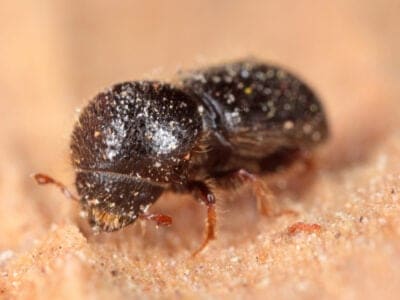
Ambrosia Beetle
The ambrosia beetle forms a symbiotic relationship with the ambrosia fungi

Armyworm
They are then named because they "march" in armies of worms from i crop to some other in search of food

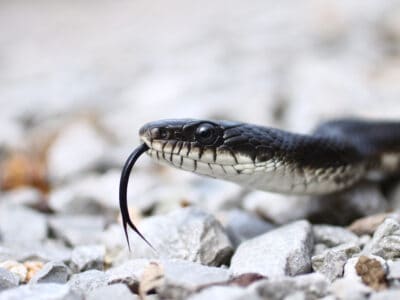
Black Rat Snake
They're also called black airplane pilot snakes due to a myth that they "pilot" venomous snakes to a den where they tin can go into brumation for the winter.
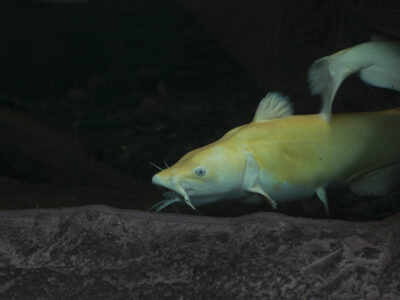
Blueish Catfish
Information technology'south a strong fighter when defenseless on a fishing line
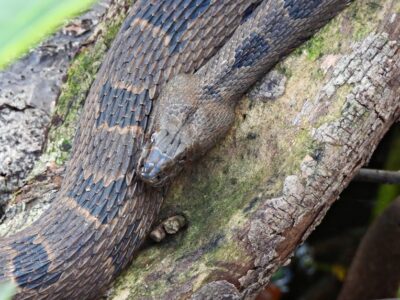

Cactus Moth
Cactus moths can cause serious harm to cacti in locations where they accept no predators.
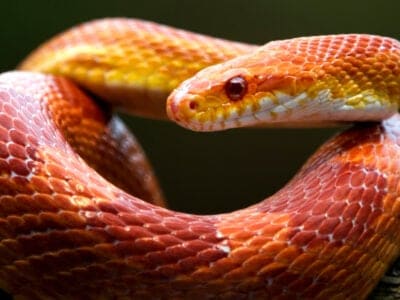
Corn Snake
Corn snakes are partly arboreal and are excellent climbers.


Eastern Chipmunk
The name chipmunk is derived from an Ojibwe word that ways "one who descends the trees headfirst."

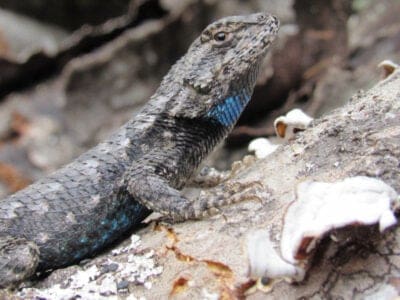
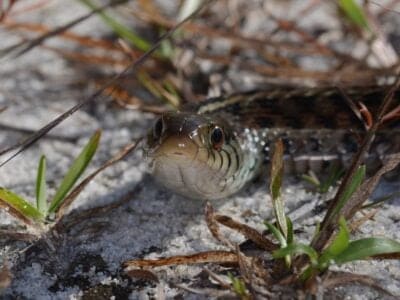
Eastern Glass Lizard
When the drinking glass lizard loses its tail it tin can abound another i. Merely the new tail lacks the markings of the old ane and is normally shorter.

Eastern Rat snake
Rat snakes are medium-to-large, nonvenomous snakes that kill past constriction.
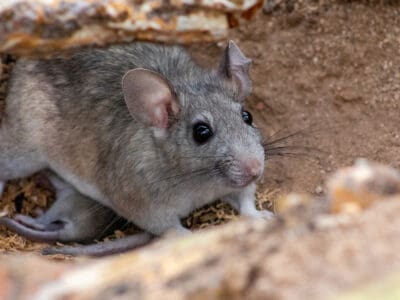
Eastern Woodrat
The eastern woodrat mating ritual involves a potentially deadly fight betwixt the male and female before reproduction begins!
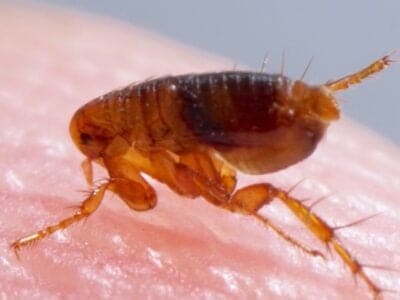
Flea
Adult fleas can spring upwards to 7 inches in the air
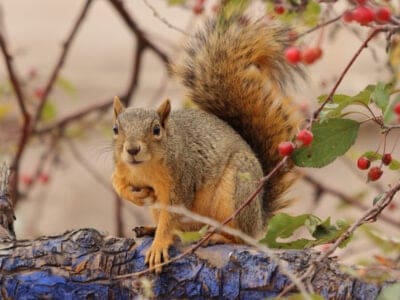
Fox Squirrel
Although it is a tree squirrel, information technology spends almost of its time on the ground.
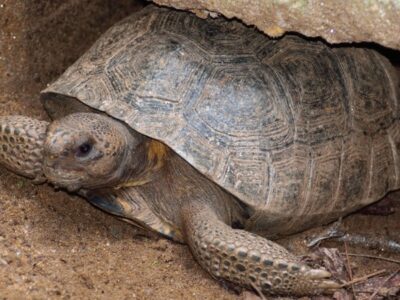



Mealybug
They have a symbiotic relationship with ants.

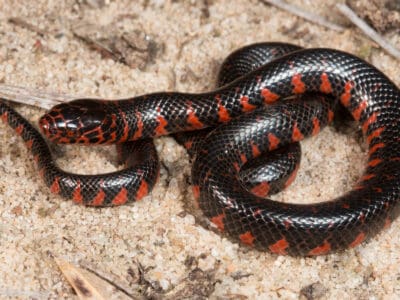


Orb Weaver
Females are almost four times the size of males

Owl
The owl can rotate its caput some 270 degrees

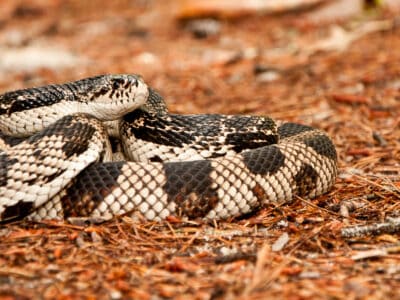
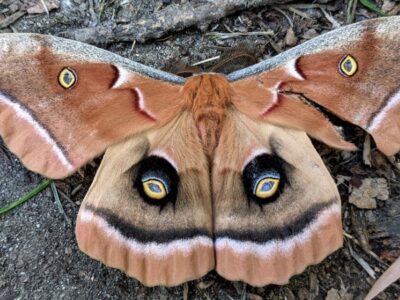

Rat Snakes
Rat snakes are constrictors from the Colubridae family of snakes.

Rooster
Will mate with the unabridged flock!
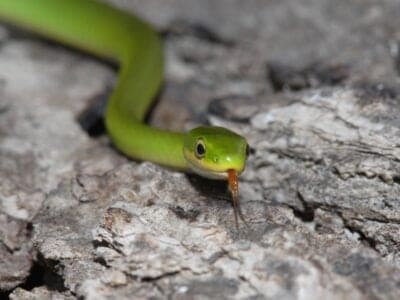
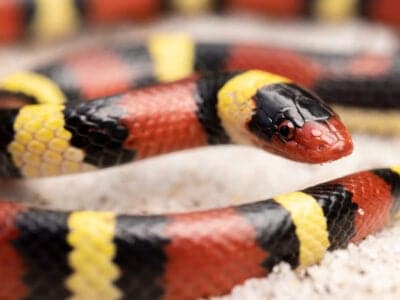
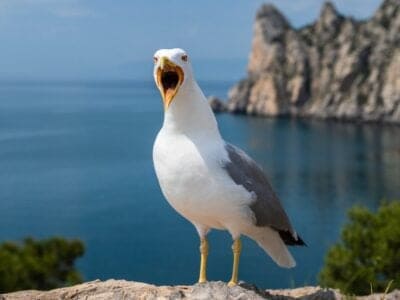
Seagull
Some gulls are capable of using tools

Short-Faced Carry
The mod Spectacled Bear, which lives in Southward America, is related to the Short-Faced Deport!


Southern Black Racer
These snakes live cloak-and-dagger, beneath piles of leaf litter or in thickets, and they are practiced swimmers.

Venus Flytrap
The Venus flytrap is amidst a grouping of plants that consumes animals
S Carolinian Animals List
- Ambrosia Beetle
- Armyworm
- Banded H2o Snake
- Blackness Rat Snake
- Blue Catfish
- Brownish Water Snake
- Cactus Moth
- Corn Ophidian
- Dire Wolf
- Eastern Chipmunk
- Eastern Diamondback Rattlesnake
- Eastern Fence Lizard
- Eastern Drinking glass Lizard
- Eastern Rat snake
- Eastern Woodrat
- Flea
- Pull a fast one on Squirrel
- Gopher Tortoise
- Groundhog (Woodchuck)
- Jackrabbit
- Mealybug
- Milk Ophidian
- Mud Serpent
- Northern Water Snake
- Orb Weaver
- Owl
- Pine Serpent
- Pine Serpent
- Polyphemus moth
- Rat Snakes
- Rooster
- Rough Light-green Ophidian
- Crimson Kingsnake
- Seagull
- Curt-Faced Bear
- Smokybrown Cockroach
- Southern Black Racer
- Venus Flytrap
Animals in Southward Carolina FAQs (Frequently Asked Questions)
What dangerous animals live in S Carolina?
Besides the ones listed, other dangerous animals in South Carolina include the black widow spider, the chocolate-brown recluse spider, stingrays, mosquitoes, alligators and fire ants.
What animal is South Carolina known for?
The animal the country is almost known for is probably the white-tailed deer, as it is everywhere.
Are at that place moose in South Carolina?
Some people claim to have seen a moose or two in South Carolina, just if it's true, the moose must be one of the rarest cervids in the state. However, the state does have the next best thing to a moose which is the elk, Cervus canadensis, and its subspecies, the Rocky Mountain elk, C. c. nelsoni. Both of these elks are vagrants and were probably just passing through. If a moose, a creature of colder climes, was seen in South Carolina it is probably a vagrant too or an escapee from a zoo.
Source: https://a-z-animals.com/animals/location/north-america/united-states/south-carolina/
Posted by: yudeppoccanot85.blogspot.com

0 Response to "What Animal Can I Keep In South Carolina"
Post a Comment